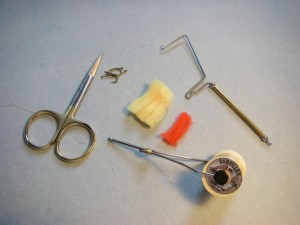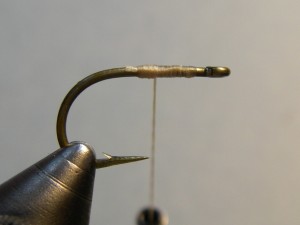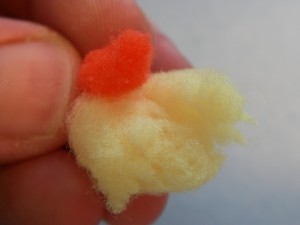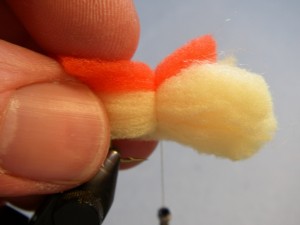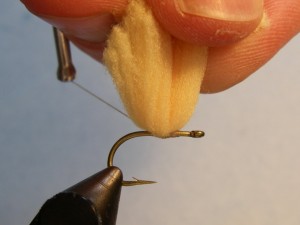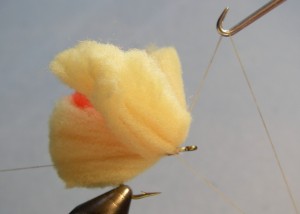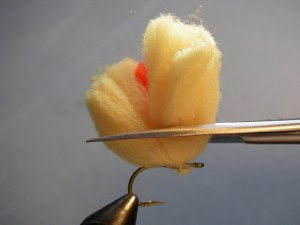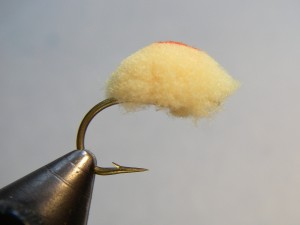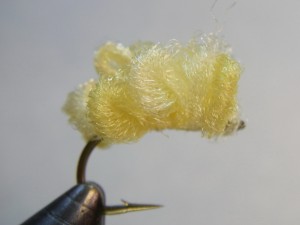 This fly represents a clump of eggs released from either a walleye or a sucker, where it gets its name. It is easy to tie and looks very realistic when wet. Do know that if you tie it in oranges and in larger sizes to imitate steelhead or salmon eggs, it will tend to be fairly heavy and can easily drag a bit.
This fly represents a clump of eggs released from either a walleye or a sucker, where it gets its name. It is easy to tie and looks very realistic when wet. Do know that if you tie it in oranges and in larger sizes to imitate steelhead or salmon eggs, it will tend to be fairly heavy and can easily drag a bit.
The material for the sucker spawn varies; some tiers choose to use angora yarn, small amounts of egg yarn, Aunt Lydia’s Sparkle Yarn to name just a few. Find what looks good to you and have some of these flies in your box. I use Needleloft yarn available at craft shops.
Sucker Spawn Recipe
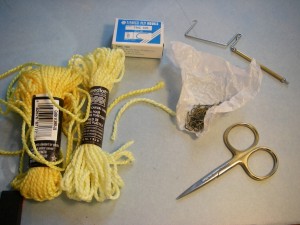 Hook: TMC 105 #6-10, Gamakatsu C14S #8 -12, TMC 2457 #8-12
Hook: TMC 105 #6-10, Gamakatsu C14S #8 -12, TMC 2457 #8-12
Thread: Uni 6/0 – Lt. Cahill
Body: Needleloft in both yellow and light yellow
Tying Instructions
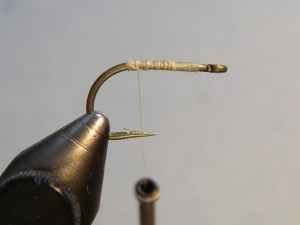 Step 1.Insert hook into vise and wrap a thread base from the hook eye to above the hook barb.
Step 1.Insert hook into vise and wrap a thread base from the hook eye to above the hook barb.
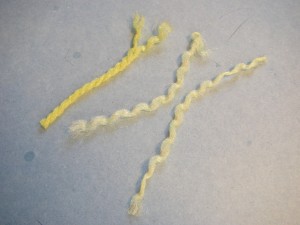 Step 2. Take about 5” of each color thread and separate the two strands, using one of each color.
Step 2. Take about 5” of each color thread and separate the two strands, using one of each color.
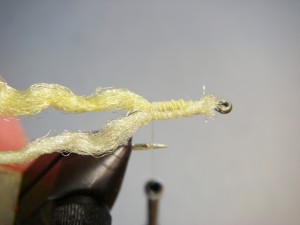 Step 3. Lay the yarn parallel along the hook shank and wrap back towards the bend in the hook.
Step 3. Lay the yarn parallel along the hook shank and wrap back towards the bend in the hook.
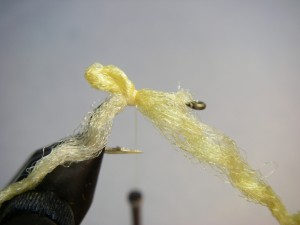 Step 4. Take one strand of yarn and twist in your fingers stopping just before the
Step 4. Take one strand of yarn and twist in your fingers stopping just before the
material double overs onto itself, then fold over, to make a loop and tie down.
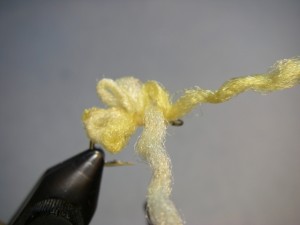 Step 5. Repeat with both strands/colors and vary it up a little for a realistic look.
Step 5. Repeat with both strands/colors and vary it up a little for a realistic look.
(Notice how the different colors are on both sides of the hook shank?)
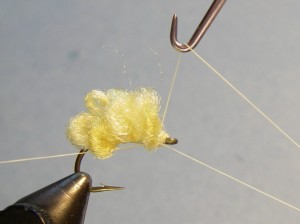 Step 6. Whip finish.
Step 6. Whip finish.
 A complete Sucker Spawn Egg Pattern
A complete Sucker Spawn Egg Pattern

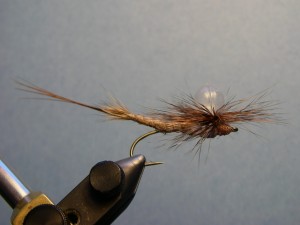
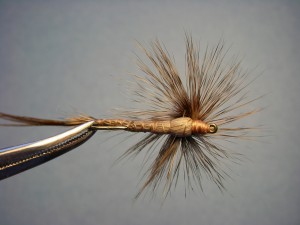
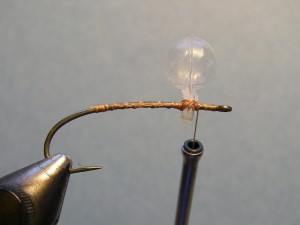 Step 1. Put the hook in the vise and wrap a base layer of thread from behind the eye to above the
Step 1. Put the hook in the vise and wrap a base layer of thread from behind the eye to above the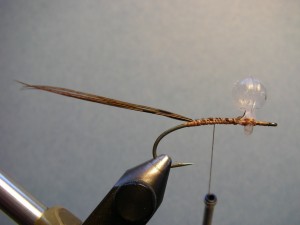 Step 2. Trim off a 4-5 pheasant tails fibers and tie in behind
Step 2. Trim off a 4-5 pheasant tails fibers and tie in behind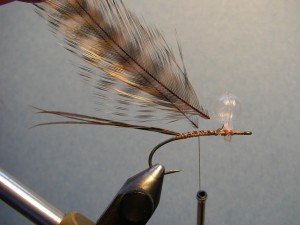 Step 3. Select two large hackle feathers. Trim some of the barbs to stubs at the
Step 3. Select two large hackle feathers. Trim some of the barbs to stubs at the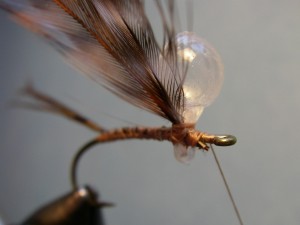 Step 4. Tie in at the base of the uni-bobber with the underside/convex side of the
Step 4. Tie in at the base of the uni-bobber with the underside/convex side of the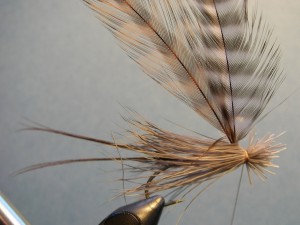 Step 5. Select a long clump of deer hair that is at approximately the diameter of a
Step 5. Select a long clump of deer hair that is at approximately the diameter of a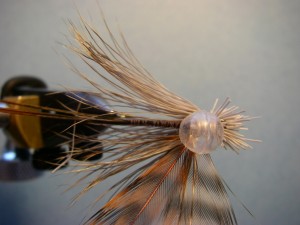 Step 6. Even the hair so it is on both sides of the hook shank.
Step 6. Even the hair so it is on both sides of the hook shank.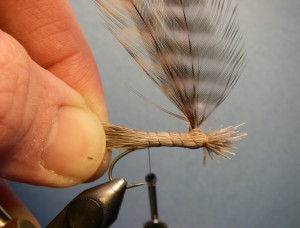 Step 7. Gently wrap the thread backwards while holding the extended deer hair
Step 7. Gently wrap the thread backwards while holding the extended deer hair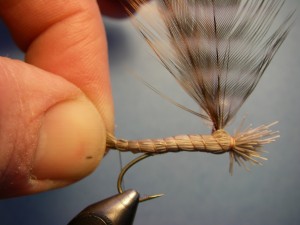 Step 8. At the end, make two or three wraps a little more pressure, then advance the thread forward
Step 8. At the end, make two or three wraps a little more pressure, then advance the thread forward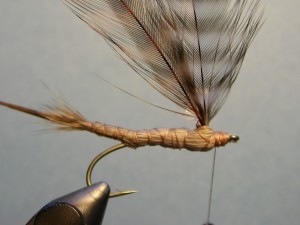 Step 9. Trim the butts of the deer hair and tie down the head covering any deer hair that is exposed.
Step 9. Trim the butts of the deer hair and tie down the head covering any deer hair that is exposed.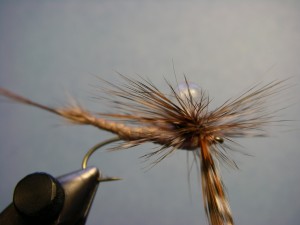 Step 10. Take both the feathers at the same time and wrap them under the bulbous uni-bobber
Step 10. Take both the feathers at the same time and wrap them under the bulbous uni-bobber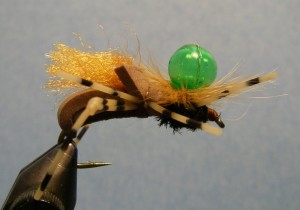 The idea for this fly was borrowed from a fly called a Thing-A-Ma-Bug which uses non-glow in the dark
The idea for this fly was borrowed from a fly called a Thing-A-Ma-Bug which uses non-glow in the dark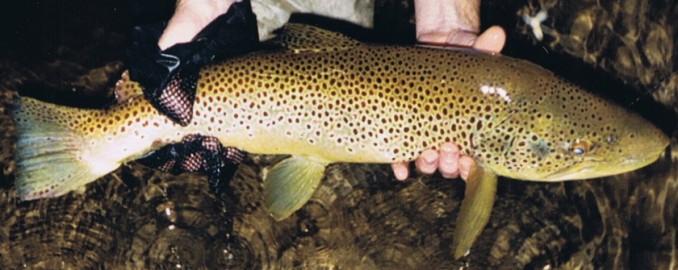
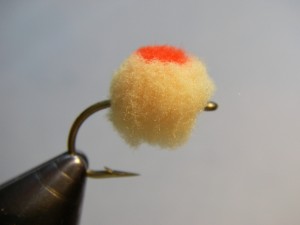 The typical material for tying Glo Bugs is Glo Bug Yarn or Egg Yarn and many, including myself have found tying nice, round looking egg flies is difficult when using this material. In the mid-1990’s a new material, McFly Foam yarn, hit the market and tying nice, round eggs has been easier ever since. It’s available in huge array of colors and anglers can mix them up or incorporate dots very easily for a custom combination.
The typical material for tying Glo Bugs is Glo Bug Yarn or Egg Yarn and many, including myself have found tying nice, round looking egg flies is difficult when using this material. In the mid-1990’s a new material, McFly Foam yarn, hit the market and tying nice, round eggs has been easier ever since. It’s available in huge array of colors and anglers can mix them up or incorporate dots very easily for a custom combination.